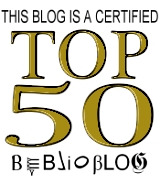 I had with me a copy of Andreas Kostenberger's volume on John (BECNT). The author's preface mentions some well-known bloggers such as Alan Bandy, Mark Ownens, and David Croteau (not to mention Kostenberger's own blog Biblical Foundations). I think Kostenberger gets John's Purpose correct when he says: "John's overaching purpose is the demonstration that the Christ, the Son of Ggod, is Jesus (20:30-31). The prologue places the entire Gospel within the framework of the eternal, prexistent Word made flesh in Jesus (1:1-18). The first half of John's narrative sets forth evidence for Jesus' messiahship in the form of seven signs (1:19-12:50; cf. 20:30-31). John also includes Jesus' seven 'I am' sayings ... and calls numerous (seven?) witnesses in support of Jesus' claim, including Moses and the Scriptures, the Baptist, the Father, Jesus and his works, the Spirit, the disciples, and the evangelist himself. Representative questions concerning Jesus' messiahship serve to lead the Gospels' readers to the author's intended conclusion: the Christ is Jesus (e.g. 1:41; 4:25; 7:27, 31, 52; 10:24; 12:34)." (p. 9).
I had with me a copy of Andreas Kostenberger's volume on John (BECNT). The author's preface mentions some well-known bloggers such as Alan Bandy, Mark Ownens, and David Croteau (not to mention Kostenberger's own blog Biblical Foundations). I think Kostenberger gets John's Purpose correct when he says: "John's overaching purpose is the demonstration that the Christ, the Son of Ggod, is Jesus (20:30-31). The prologue places the entire Gospel within the framework of the eternal, prexistent Word made flesh in Jesus (1:1-18). The first half of John's narrative sets forth evidence for Jesus' messiahship in the form of seven signs (1:19-12:50; cf. 20:30-31). John also includes Jesus' seven 'I am' sayings ... and calls numerous (seven?) witnesses in support of Jesus' claim, including Moses and the Scriptures, the Baptist, the Father, Jesus and his works, the Spirit, the disciples, and the evangelist himself. Representative questions concerning Jesus' messiahship serve to lead the Gospels' readers to the author's intended conclusion: the Christ is Jesus (e.g. 1:41; 4:25; 7:27, 31, 52; 10:24; 12:34)." (p. 9).A second book that I browsed through was Martin Hengel's scintillating work Johannine Questions. A summary of Hengel's view of the authorship and origin of John's Gospel and the Johannine Letters is found on pp. 102-8. Hengel says this: "Despite all the tensions and breaks, no New Testament thinker has such integrating, fusing power as the author of the Fourth Gospel. This power not only shaped his unique language but at the same time brings together in his work the threads of the history of religion from all sides: from Qumran, Jewish apocalyptic and wisdom literature; from rabbinic Midrash and from Jewish hekhalot mysticism to Philo, the Hermetica and - later - Gnostic texts. The Jewish element predominates, but the Hellenistic aspect is not absent" (p. 104).




3 comments:
Hi Mike. Thanks for your interesting post. Allow me to urge you strongly to get a TV license. It represents fantastic value for money. The range and quality of BBC programming that you get for about £12.50 a month is remarkable. Second to none. I am pining for it out here in the US. You definitely won't regret it.
Hey Mike,
I would like to point out an inaccuracy in your post -- our World Series does involve Canada ;)
Mike,
Good post! Kostenberger's commentary on the fourth Gospel is very close to his former teacher's work, D.A. Carson. The Sevenfold witness as an indication of Jesus' messiaship is striking.
Post a Comment